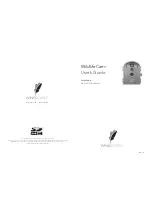
V1.02
Thom Hogan’s Complete Guide to the Nikon D300
Page 259
bison to be the very dark color he really is, not
exposed to become more like a middle tone value
82
).
If you’ve got the knowledge of how exposures work
and need to make specific readings of small portions
of the scene, by all means try spot metering. Just be
aware that the “spot” can change (see “Spot” on page
<253>).
Metering with Digital Requires Care
For some of you reading this eBook, the D300 is your first
excursion into digital SLR cameras. If you’ve previously used
a 35mm SLR body with print film, you’re likely going to be a
bit frustrated with exposure when you first start using the
D300.
Print film has advantages that you may not have known
about, but certainly benefited from:
•
Print film has a wide “latitude,” or tolerance to exposure
error
. Indeed, overexposing print film is something that
professionals tend to do routinely, as it has little
consequence on highlight detail but increases density of
shadow areas for most films.
•
Print film has a wider dynamic range
. Print film holds a
wider range from dark to bright than does a digital
camera. Views differ on the exact difference, but it could
be as much as three stops.
•
Automated print processors “fix” most minor problems
.
Besides correcting for exposure errors of from –2 to +3
stops, they also rebalance colors.
82
Not to be condescending, but if you didn’t understand what I wrote there, spot
metering probably isn’t for you. Spot meters allow you to isolate one particular thing
in a scene and then use the information you obtain to place the tonal value for that
object at a particular place within the dynamic range of the capture device. As the
previous sentence implies, you have to understand and master quite a few bits of
information to use a spot meter well. Indeed, entire books have been written on the
subject.
















































